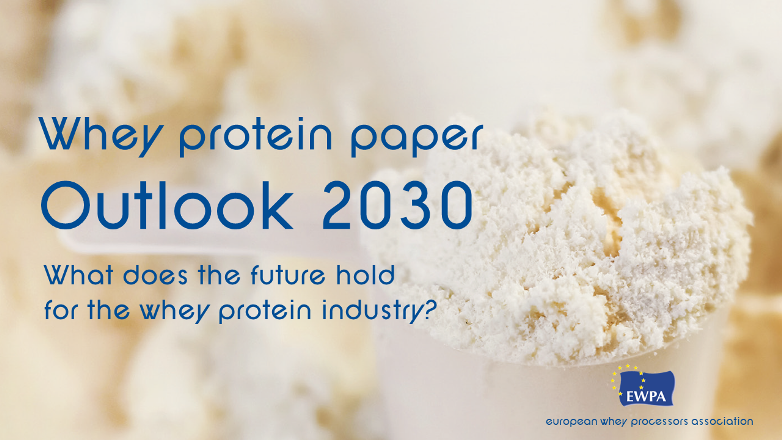The European Whey Processors Association (EWPA) has published an in-depth report on the future trajectory of the whey industry. The project, led by Benno van Mersbergen, Director of Product Strategy and Marketing at FrieslandCampina Ingredients, examined the external forces that could shape the future of the whey industry and how manufacturers can adapt to these potential scenarios.
Whey is one of the primary proteins found in cow’s milk and is a valuable material produced during the cheese-making process. It contains a high amount of all nine essential amino acids and is highly soluble, making it an exceptionally well-absorbed and easily digested protein. Whey has many specialist uses, including in infant formula, sports nutrition and in applications for aging consumers.
Whey is an essential source of protein with a wide range of applications and, as a side stream of cheese production, it makes great use of existing materials. However, more can be done to ensure whey is produced as sustainably as possible. Meanwhile, the rising cost of fuel, global supply chain issues and reduced production volumes have all had a significant knock-on effect to the whey industry.
Using insights provided by key whey sector experts, this in-depth white paper presents its findings on the basis of an impact-uncertainty axis. It considers economic, environmental, political, regulatory, social and technological factors that impact the whey industry. The report also delves into the impact that global consumer trends and evolving attitudes towards animal-based proteins will have. In examining the industry from every possible angle, the white paper reveals four potential future outcomes for the whey market. These can be summarised as:
- Whey for all – Food security becomes the top global priority for policymakers, the current decline in dairy herds eases and farm costs are relieved. There is no limitation on the whey available.
- New horizons – Reducing emissions becomes the top global priority for policymakers. This leads to a reduction in dairy herds and a resultant increase in farming costs. Global whey output reduces, as does meat consumption, leading to reduced demand from the feed industry. Whey protein becomes an increasingly specialised ingredient.
- Wheyvolution – Environmental restrictions increase while global conflicts and geopolitical tensions also mount, limiting free trade. Food security becomes a high global priority so whey output increases. Consumers continue to use whey alongside alternative proteins in their diets.
- Indispensable whey – Slowing climate change becomes the top global priority and this speeds the decline in dairy herds, resulting in significantly reduced whey output. Demand for protein continues to grow, however supply limitations force formulators to use alternative proteins, with whey only being used where it cannot be substituted.
Said Benno van Mersbergen, Director of Product Strategy and Marketing, FrieslandCampina Ingredients: “Whey proteins are an important source of nutrition for a broad range of consumers including infants, athletes and our ageing population. By highlighting the importance of a collaborative industry approach, we hope these insights will help whey manufacturers identify opportunities for innovation to make sure we’re getting the best quality proteins to those who need them as efficiently as possible.”
Added Luis Cubel, EWPA President: “The whey industry is intrinsically connected to and affected by global market forces. It’s important for policymakers to take a wide view of the potential impact on the whey sector when setting legislative priorities. Through the publication of this in-depth report, our aim is to deepen the conversation about the future of the whey industry and its likely trajectory over the coming years. By examining the current state of play and the potential outcomes of external influences affecting the whey sector, we can better prepare ourselves and our members for what the future might hold.” For more on the EWPA Whey Protein Paper Outlook 2030, visit https://bit.ly/3Hxr8Tu



